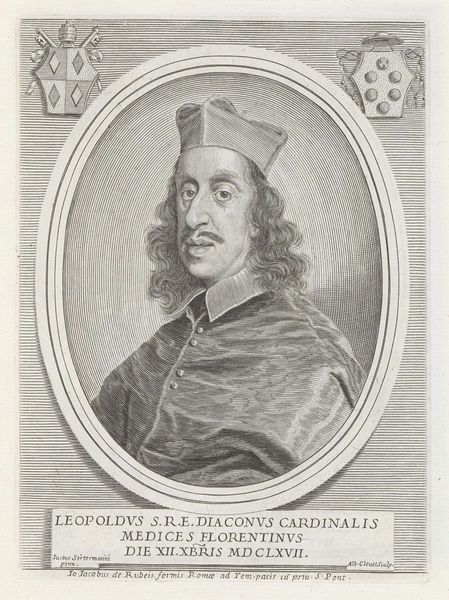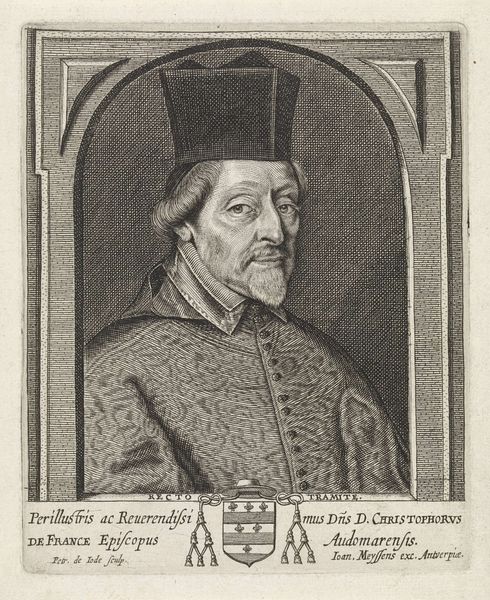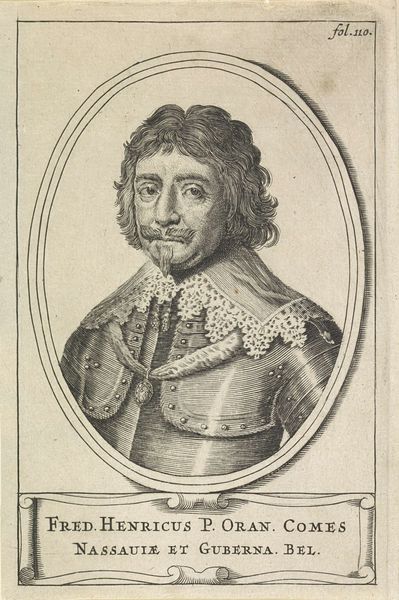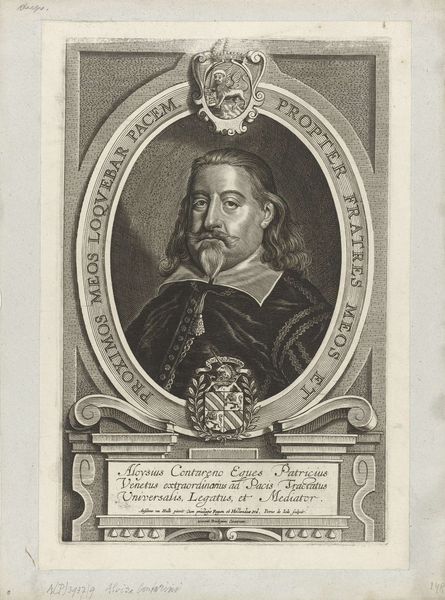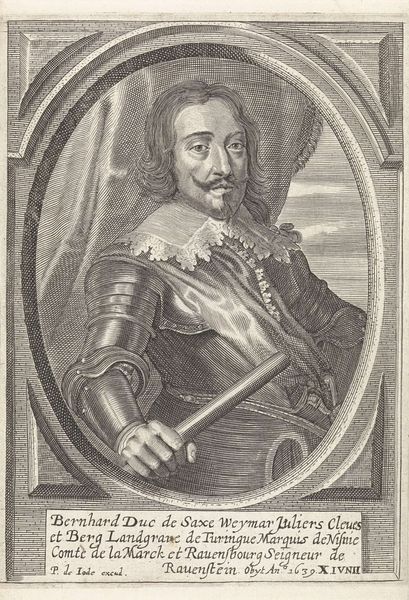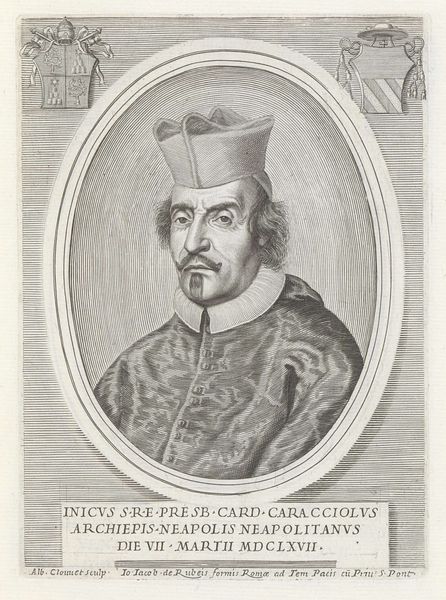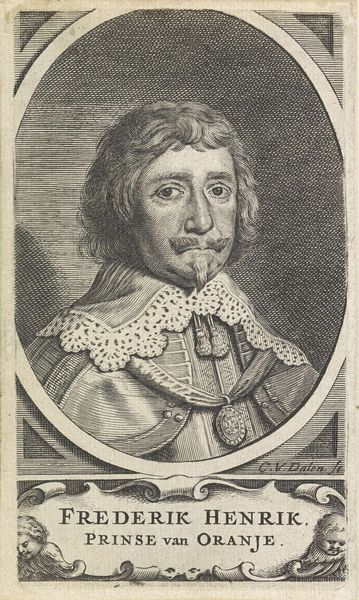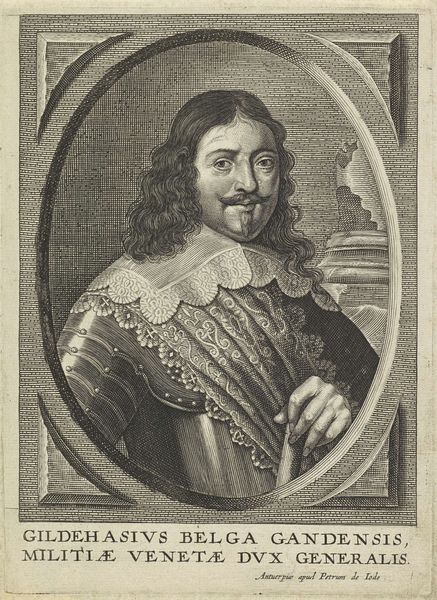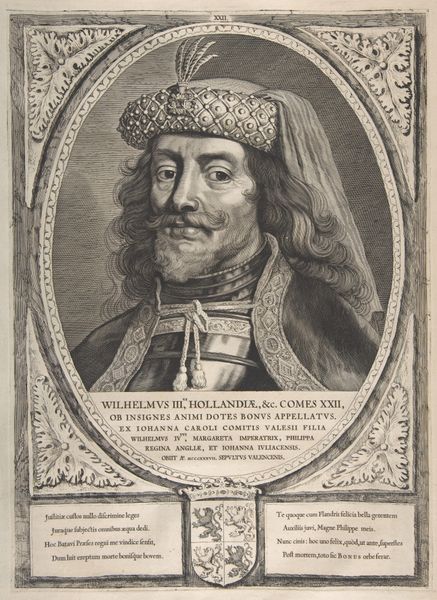
engraving
#
portrait
#
baroque
#
old engraving style
#
figuration
#
portrait reference
#
line
#
history-painting
#
academic-art
#
engraving
Dimensions: height 197 mm, width 146 mm
Copyright: Rijks Museum: Open Domain
Curator: Here we have Albertus Clouwet’s "Portret van kardinaal Luis Guillermo de Moncada Aragón," an engraving created between 1667 and 1679. It offers a fascinating glimpse into the power structures of the era. Editor: The precision is quite striking. You can practically feel the texture of the Cardinal's robes just from the etching. But looking closely, I'm drawn to the way his facial features appear a little... stiff? Curator: Indeed. Portraiture then was as much about conveying status and authority as capturing likeness. The Cardinal’s pose, framed by the oval and flanked by heraldry, speaks volumes about his lineage and position within the Catholic Church. Note the sharp, clean lines, which align perfectly with academic artistic norms. Editor: But engravings like this were often mass-produced, right? So how much individual artistry truly went into making it, considering the workshop likely dictated much of the labor process? I'm thinking of the division of labor here. Curator: Certainly, it was a commercial enterprise, especially those commissioned by the Church or aristocracy. This wasn't just about the Cardinal; it was about disseminating his image, solidifying his power, and influencing public perception. Engravings allowed for relatively inexpensive and widespread distribution, reinforcing established hierarchies. Editor: So this portrait, meticulously crafted, acted as a kind of early propaganda? Considering its Baroque styling and attention to detail, did that impact its cost of production? Curator: Absolutely. The Baroque style with its ornamentation signified grandeur. Though engraving was more economical than painting, the skill required and the materials used—the copper plate, the inks, the paper— all factored into the cost, shaping its accessibility. And, of course, it shaped how the Cardinal wished to present himself. Editor: It makes me wonder who precisely its audience was meant to be? Was it just to shore up faith, or serve some other purpose? Curator: Most likely a blend of both. Think about potential display within religious institutions, reaching the faithful and reinforcing their allegiance. It simultaneously served as a diplomatic gift, circulating amongst the elites of Europe. Editor: It seems an artifact deeply embedded within the socio-economic framework. Thank you. I think I see the Cardinal, the artist, and the consumer in new light. Curator: Precisely, understanding its historical context reveals its true layers of meaning beyond its mere visual appeal.
Comments
No comments
Be the first to comment and join the conversation on the ultimate creative platform.
